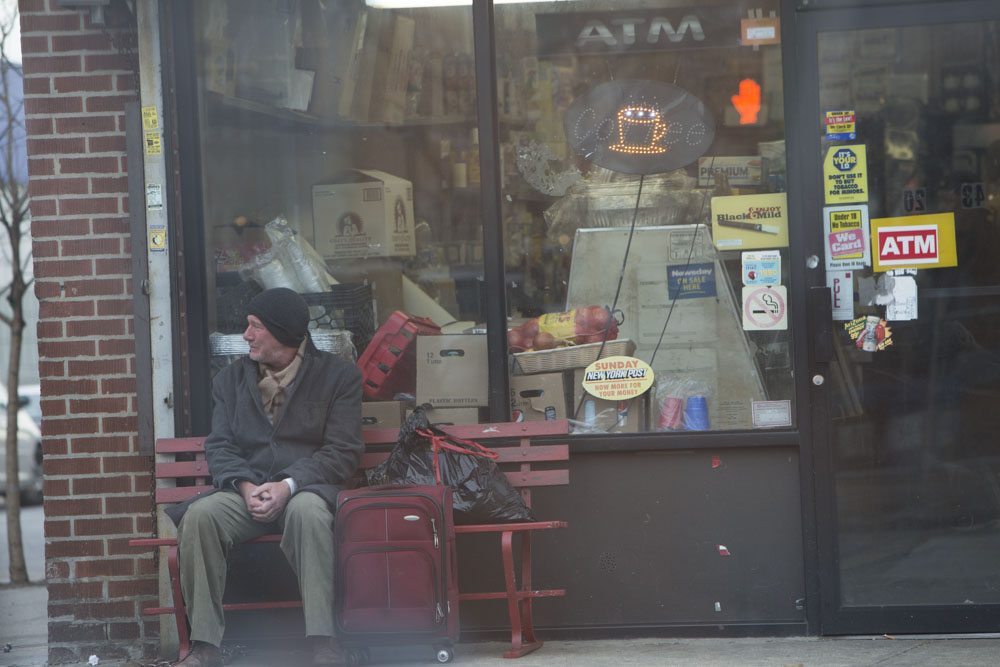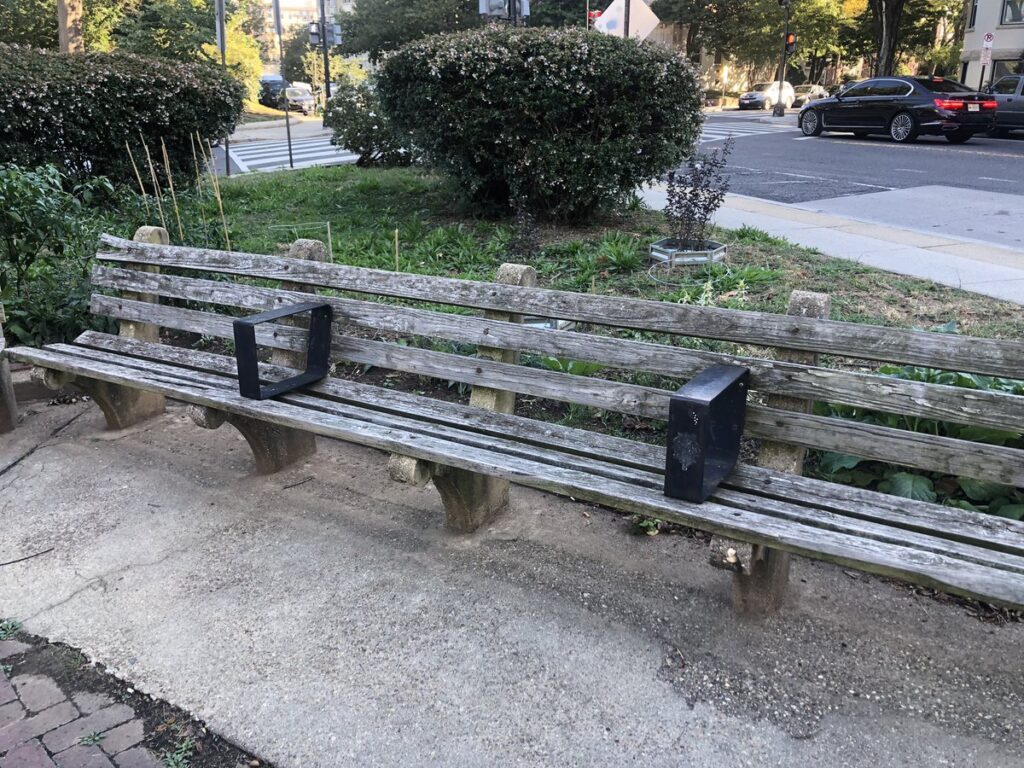Homelessness is an issue rarely championed by A-list Hollywood actors. But Richard Gere has honed in on the experience as star and producer of “Time Out of Mind,” released for streaming on demand September 18.
Directed by Oren Moverman, the film follows George Hammond, a fictitious homeless man played by Gere, from the point of eviction through the movements of his life. George struggles to admit to himself or others that he is homeless. Once he does, it is near impossible for George to qualify for government services without documentation to prove his identity. He also attempts to reconnect with his estranged daughter in an example of the slim personal support systems many people experiencing homelessness have.
Last Thursday, September 10, a private screening of “Time Out of Mind” was hosted at Georgetown’s AMC Loews theater by the DC Film Society. Directors from Street Sense’s homeless filmmakers cooperative were invited to attend the screening, which was followed by a question and answer session with Gere and Moverman. Service providers So Others Might Eat, Capital Area Food Bank, Friendship Place and Covenant House were also invited.
Gere arrived at the Q&A after appearing on a Capital Hill panel to advocate for increased government funding to programs of the Department of Housing and Urban Development (HUD).
Congresswoman Maxine Waters (D-CA), a panel of experts on homelessness policy and Richard Gere at a public briefing on the state of homelessness in America, September 10, 2015 | Video by the Democratic Caucus of the U.S. House of Representatives
At the Q&A, Gere outlined the process that brought “Time Out of Mind” to fruition. When he first read the original script 12 years ago, it featured a strict plot structure with heavy focus on a lawsuit between George and the city. Gere found this plot unrealistic, but he was still struck by aspects of the script.
“I couldn’t get it out of my mind, the possibilities of it.” Gere said. “And then I ended up buying it and spending many years trying to think how to mine what was inherent in the script but hadn’t been revealed yet.”
He eventually approached Moverman, who agreed to revise the script and direct the project.
“From the beginning we talked about making a movie that is not going to be a movie of the week, or an expected story … of homeless to Harvard triumph. No disrespect to that story, but it wasn’t going to be that singular, exceptional story,” Moverman said.
According to Gere and Moverman, they visited shelters in preparation for both writing and filming, speaking to administrators, guards, and clients. Several key scenes were filmed in Manhattan’s Bellevue Men’s shelter and at the New York Coalition for the Homeless.
“The research itself ended up being the movie,” Gere said.
Full Q&A | Video by WTOP news.
In an effort to perpetuate this authenticity, many of the scenes were filmed with the camera operators hidden, capturing the reactions of passersby to Gere dressed as a homeless man on the street. Rather than noticing they were in the presence of the actor famous for his roles in “Pretty Woman” and “American Gigolo,” passersby ignored Gere, enabling Moverman to capture a realistic view of the public’s reaction to homelessness as they encountered it.
“Part of the impetus for making a movie like this is to bring you to a place where the people you don’t look at—one person in this case—becomes the main event,” Moverman said. “You still don’t know that much about him, but you open yourself up to the possibility of having compassion for this person. And through that you hopefully discover something about yourself.”
The film was praised as authentic by Cynthia Mewborn, a Street Sense filmmaker, comparing it to her experience with homelessness.
“No one’s really ever captured the essence of what it’s like to be in a shelter, and you guys nailed it,” she said.
Other Street Sense vendors were able to weigh in as well. In a personal interview with Gere and Moverman, vendor/filmmaker Robert Warren and fomer vendor William Mack discussed this topic of isolation with Gere.
“I told him about my experiences being a vendor. How people kind of act like you’re not even there, like they don’t even see you,” Warren said.

William Mack, Richard Gere, Oren Moverman and Robert Warren. | Photo courtesy of William Mack
Warren also questioned Gere for ideas on specific solutions to homelessness. Gere emphasized that while housing is a vital part of the solution, a more holistic approach is required, including a focus on community. Gere remarked on the isolation he felt when adopting the character of George Hammond, naming personal connections as a basic need.
“We’re social beings. We need to see faces. We need eye contact. We need to touch and hear. Without community, we fall apart,” Gere said. “I could feel it playing the character on the street in the movie. This sense of isolation and disconnect leads to mental issues, psychological issues, spiritual issues. And it happens so quickly; any of us, we would fall apart,”
Gere discussed his activism for the homeless in greater detail at the National Alliance to End Homelessness’ 2015 National Conference on Ending Homelessness, noting his involvement with the Coalition for the Homeless in New York. This connection helped him to find a direction for the original “Time Out of Mind” script.
Full interview | Video by the National Alliance to End Homelessness.
“We made what I consider one of those things I’m most proud of that I have done,” Gere told the conference.
He also described to the audience the experience of first taking on George’s character in the city in a scene in which he panhandled at Astor Place.
“The cliché is ‘invisible’, I wasn’t invisible—I was a black hole. I was a black hole that people were terrified of being sucked into. No one paid attention to me. We shot for 45 minutes.”
Gere emphasized his hope that “Time Out of Mind” might be used to rouse compassion in its viewers in a way that aids organizations like the National Alliance and the Coalition for the Homeless, noting the 60,000 incondividuals residing in New York shelters.
“It’s not about numbers,” he said. “Numbers don’t touch anybody. The more numbers there are, the more numb we get. An open-hearted connection is key. Even the slightest taste of empathy opens us all up.”
In addition to on demand streaming, Time Out of Mind is playing at Landmark West End Cinema. On any given night, 7,300 people are expected to experience homelessness in the District of Columbia.
READ ALSO: reflections and reviews by Robert Warren, Sasha Williams and William Mack.








